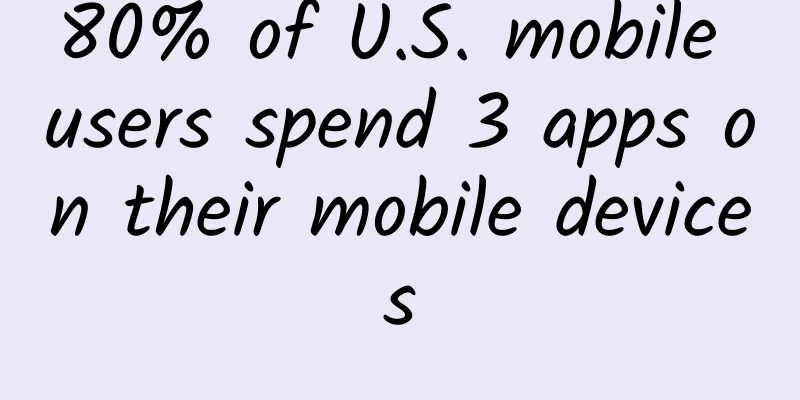80% of U.S. mobile users spend 3 apps on their mobile devices

|
On September 28, market research company comScore released the latest report on US mobile user behavior last week. The report shows that US users are increasingly engaging in cross-platform activities. However, although desktop and mobile websites have a wider coverage of the population, apps attract the vast majority of user engagement. Data shows that desktop Internet is not dead. User usage has continued to rise since 2013. However, this growth rate is slower than that of mobile Internet. 62% of all time spent consuming digital media now happens on mobile, with the majority of that time coming from apps. Recently, time spent on mobile apps has surpassed time spent on TV. In comparison, desktop has dropped from 49% to 38% since 2013. It is worth noting that the time users spend on mobile devices is concentrated in applications, which has now reached 90%. However, compared with mobile websites, mobile applications attract fewer users. In other words, mobile websites cover more users, but mobile applications attract more user engagement. Among mobile apps, Facebook leads in terms of both user coverage and user engagement. Among the top five apps in the United States, Facebook has two, while Google has three, namely YouTube, Search, and Google Play. Google Maps ranks sixth. The limited number of apps used by users is due to a number of reasons, such as limited storage capacity on smartphones and small screen space. The report states that it is easier to attract users on desktop and mobile websites, but users of mobile apps are more meaningful. "Users spend 18 times more time in apps than mobile website visitors," comScore reported. The report also pointed out that half of the time users spend on mobile apps is concentrated in the most frequently used apps, and about 80% of the time is concentrated in the three most frequently used apps. However, users use 25 apps per month. Based on this data, it is clear that the time users spend with digital media is becoming increasingly concentrated in a few heavyweight apps. In addition, apps should be at the core of media strategies for brands, retailers and publishers. However, acquiring and retaining app users is becoming increasingly challenging. |
<<: Notes on changes from iOS 8 to iOS 9
>>: Ruan Yifeng: Why is the memory address of the master boot record 0x7C00?
Recommend
How to promote your products effectively?
In most cases, many people are easily influenced ...
The GuangDianTong delivery guide for the education industry optimizes the entire process!
Among the current mainstream information flow cha...
Android Wear is also about to be upgraded to 5.0, and the watch face display mode is turned on
In this era of personalization, you may also thin...
How to operate a new product?
This problem is universal, and I believe every op...
Practical sharing: Summary of the development of the WeChat mini-game "Happy Tank War"
Preface "Happy Tank Battle" is a work t...
A few things an investor wants to understand during these days of the COVID-19 pandemic
Perhaps no one expected that 2020 would hit us ha...
Hot-selling product marketing strategy
This article summarizes the five most frequently ...
New scientific discovery! The existence of life outside the Earth has been confirmed for the first time
8th #The first confirmed existence of life outsid...
What are the number ranges for 400 telephone numbers?
When enterprises are handling 400 telephone numbe...
Summary of the main algorithms of the recommendation system and examples of Youtube's deep learning recommendation algorithm
Collaborative filtering Collaborative filtering (...
Community operation: 5 tips to increase community activity!
First of all, we need to figure out what is the p...
Inventory | Characteristics of major information flow channels in 2018
Since the beginning of this year, super apps such...
[Creative Cultivation Program] Geothermal Energy Exploitation: Digging deep into the earth to get thermal energy, is it reliable?
Author: Niu Mingmin Reviewed by: Zhang Yuxiu, Pro...
How can domestic LiDAR gain a share in the field of autonomous driving under the shadow of Velodyne?
The World Intelligence Conference just ended held ...
up to date! Traffic rankings of 33 information flow platforms, a must-read for advertising!
Do you want to know how the major information flo...









